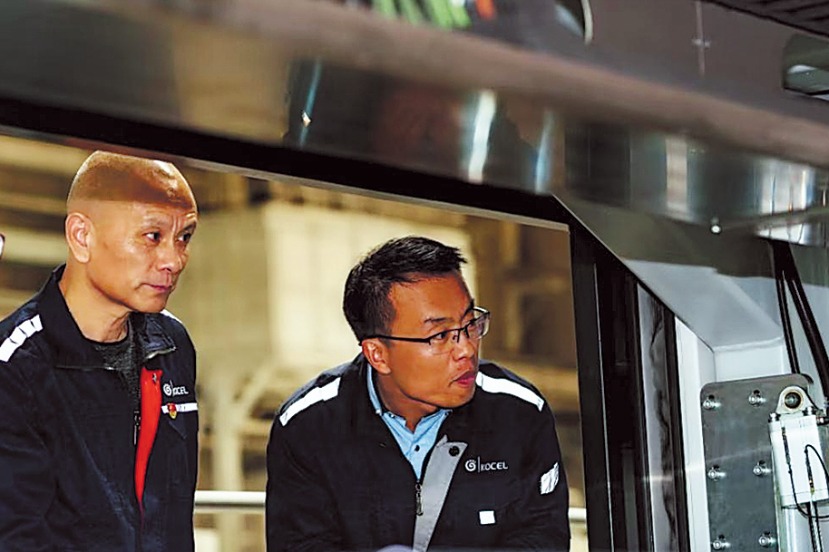Manufacturing makes way to services


Manufacturing is the central focus of the industrial and trade policies being implemented by China and many other countries. The sector gets special treatment because of its crucial role in providing the hardware for national defense, decarbonization, artificial intelligence and quantum computing. Policymakers also seek to promote manufacturing because it has traditionally been important in generating good jobs for less-educated workers.
But despite manufacturing contributing to national prosperity in both developed and developing countries, with most research and development focused on the sector, it is increasingly unable to create enough jobs for workers who need them. In the United States, for example, less than 10 percent of workers work in manufacturing and even if President Donald Trump's policies succeed in eliminating the US trade deficit through higher tariffs, the impact will not do much to change the prospects of workers without college degrees.
Inverted U-curve in manufacturing employment
Moreover, since many countries are focused on technological improvements, the skill-based nature of the new industrial policies could further disadvantage less-educated workers. This means additional policies are needed to achieve shared prosperity by creating more jobs for less-educated workers through the promotion of economic activity in services.
The misconceptions about manufacturing today are widespread. It is widely understood that as countries develop, the employment share in farming will decline and the employment share in services will rise. But it is not understood that in almost all countries the employment share in manufacturing follows a humped path — rising in the early stages of development and then declining. All developed and many emerging economies have now passed the peak and are moving along the downward side of the hump.
Surprisingly, especially after the peak is reached, running trade surpluses does little to prevent the decline: The declining share of manufacturing employment is evident even in export superpowers such as Germany, Japan, Singapore, Malaysia and the Republic of Korea, and more recently China.
This inverted U-curve that relates manufacturing employment to income has also been shifting downward over time and peaking at lower income levels in many developing countries. This makes it increasingly difficult for countries in Central America, sub-Saharan Africa, South Asia and the Middle East to provide manufacturing jobs for new workers where the share of the population below 30 has experienced explosive growth. It is not surprising that the borders and shores of the rich countries are increasingly filled with desperate immigrants seeking better opportunities.
In a book published by the Peterson Institute for International Economics, I present evidence of this hump-shaped path. I found that it is evident in virtually every country and region. I also found that higher manufacturing productivity over time, and lower rates of investment are associated with lower manufacturing employment peaks for countries that develop later.
The hump emerges because there is, in the early stages of development, a powerful force leading to higher manufacturing employment. Rapid productivity growth in agriculture makes food cheaper. But since demand is relatively unresponsive (inelastic) to price and income changes, despite people buying more food, consumers spend less on food and more on manufactured goods and services. Thus, when the agricultural sector is large, ever-cheaper food is an important force that generates increased manufacturing employment demand.
But later, the share of agriculture shrinks and, again, interacting with inelastic demand, it is manufacturing's own productivity growth that causes the sector's employment share to shrink. Therefore, the explanation for the declining share of manufacturing past the peak is the same as the declining share of farmers: Rapid productivity growth in the sector combined with inelastic demand.
How to offset side effects of faster productivity
In some countries, the effects of faster manufacturing productivity growth in reducing manufacturing employment can be offset or delayed by two factors. First, higher manufacturing productivity can boost manufacturing jobs that produce for the export market. And second, since more manufactured goods are required for investment than consumption, a higher investment share can boost demand for manufacturing workers.
These offsetting effects also help explain the rise in manufacturing employment as countries initially develop, but they dampen as countries get richer. At higher incomes, the investment share falls; and as exports gain a larger market share through higher productivity, demand becomes less responsive to falling prices when their competitiveness improves. Eventually, therefore, in almost all cases, the declining share of domestic consumption spending on manufactured goods dominates, and the manufacturing employment share falls.
China's experience fits this model. In the early stages of its development, reforms in agriculture and the shift of workers out of farming into more productive jobs in manufacturing and services led to rapid growth. China's very high rates of investment, especially on infrastructure and construction, generated a strong demand for manufacturing products.
In addition, China's growing manufacturing productivity increased manufacturing net exports. These factors led China to an extraordinary share of manufacturing output and employment, and are generally above the curve in a global sample. But these forces have weakened, and the share of employment in Chinese manufacturing has passed its peak. According to the International Monetary Fund, its share of investment in Chinese GDP fell by 4 percentage points between 2013 and 2023, and although the global market share of Chinese exports continued to grow, exports declined as a share of China's GDP.
Also, it seems likely that the share of manufacturing employment in China will continue to decline as these trends continue with slower growth and rising protectionism abroad dampening the impact of investment and trade.
This calls for more consumer spending at home. But substituting investment and exports with domestic consumption will lead to a still lower share of demand for manufacturing output and employment and a growing demand for services. In sum, to provide inclusive growth, as in the US, China's policies should focus on equipping workers and enterprises for growth in services in addition to promoting the manufacturing sectors that have been prioritized.
The author is a professor at Harvard Kennedy School and a non-resident fellow at the Peterson Institute for International Economics. This article draws on his recent book, Behind the Curve: Can Manufacturing Provide Inclusive Growth.
The views don't necessarily reflect those of China Daily.
If you have a specific expertise, or would like to share your thought about our stories, then send us your writings at opinion@chinadaily.com.cn, and comment@chinadaily.com.cn.

































